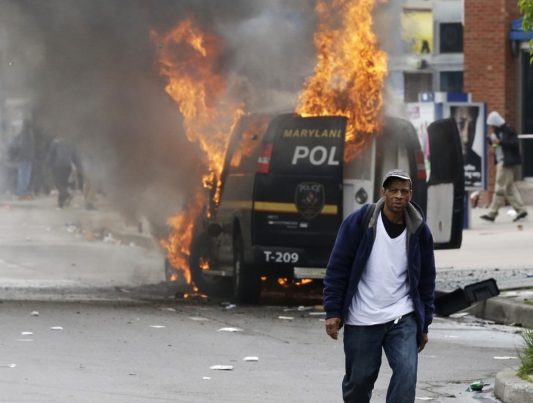Here are 10 basic urban movement techniques that will help keep you alive in times of turmoil
Thursday, November 05, 2015 by usafeaturesmedia
http://www.bugout.news/2015-11-05-here-are-10-basic-urban-movement-techniques-that-will-help-keep-you-alive-in-times-of-turmoil.html

(Bugout.news) As you are likely aware, economic globalization has brought new wealth to tens of millions of people over the past few decades. As the wealth has spread so, too, has urbanization; in fact, the world is currently undergoing massive urbanization as the overall trend has been a migration of people from poorer, rural areas to more prosperous cities that offer better opportunities.
In times of peace and stability, this urbanization trend represents a positive for Mankind overall; better opportunities lead to more prosperity, and prosperity generally leads to peace. However, in times of societal collapse – triggered by war, or financial catastrophe or some other factor – major cities will devolve from urban centers of opportunity into dangerous cauldrons of chaos.
Any soldier who has been in combat will tell you that the most difficult operations of all are those that take place in an urban environment. When you think about it for a moment, you realize that is true: Danger can come from a variety of different places all at once, and you’ve got to be ready for each and every one of them.
The video below is a sample of what it’s like to fight in an urban environment; watch as a group of Syrian rebels moves through a city to attack targets:
Without comment on the group’s firing skills and tactics, suffice to say the video should give you some idea of what it is like to fight in an urban environment. Consider the Russian army’s experience with Chechen rebels in 1994, per the U.S. Army’s field manual on Urban Operations:
The Chechen rebels, after failing to engage Russian forces outside the city, chose to turn Grozny into the main battlefield. Leaders of the defeated Chechen conventional forces recognized that fighting in the urban area provided them their best chance for success. The complexities of urban combat and the perceived advantages of defending an urban area mitigated their numerical and technological inferiority. The urban area provided the Chechens protection from fires, resources, interior lines, and covered and concealed positions and movement. Given such advantages offered by the environment, smaller or less-sophisticated military forces have similarly chosen to fight in urban areas either as a deliberate strategy or to escape certain destruction in open terrain.
Will you likely face an “army?” Probably not. But you are likely to face groups of people who have banded together for a common purpose, more along the lines of the Syrian rebels in the video. These groups could be gang members, individuals from a particular apartment complex, or just a loosely affiliated bunch that only wants to survive (like you do).
With that, operating in an urban environment is complex, to be sure, but you should keep these principles uppermost in your mind at all times:
- Danger can come from anywhere, at any time. Consider this scene from the 1998 film Saving Private Ryan:
And this one:
Danger can come from anywhere, anytime.
- Before moving, have a plan. Where are you going? What route will you take to get there? If you’re not sure where you’re going, wait until you are. There is nothing worse than a group of scared folks wandering aimlessly from point to point.
- When moving, don’t stay out in the open. Try to stay close to buildings – don’t just walk openly in the middle of the street. You’ll make a much better target out in the open.
- Be mindful of doorways. There are so many places to hide in an urban environment – and to lay in wait for an ambush. Be careful to move quickly past entrances and doorways.
- When moving, stay as quiet as possible. Even if you are, most of those traveling with you won’t be experts in military hand signals. That said, there are a few universal signals everyone understands – like “go that way” or “come this way” or “stop.” Use signals when moving to reduce noise which can help pinpoint your location, even in an urban environment where sound bounces.
- When moving, don’t bunch up. Doing so makes a better target. Keep about 10 feet between yourself and the person behind you.
- Watch constantly. Don’t ever relax. You can’t afford even one mistake. Constantly scan your environment – above, left-to-right, and behind. Keep low and find some cover if danger presents itself.
- Cross quickly. When crossing a street or an intersection, don’t dawdle or hesitate. Locate where you’re going and go directly to that spot, as quickly as possible. Once you get there, look around for any signs of danger, especially if you’re the first one to cross.
- Look out below. Modern cities are crisscrossed with sewer systems that are essentially tunnels that provide cover for groups to move without detection. Danger can come from below as well; be mindful of that when walking past street water drains and similar structures.
- Don’t go it alone. If you can find someone you can trust, the buddy system is always best. It’s good to have someone watch your back as you watch theirs. Remember Rule No. 1.
Tagged Under:

